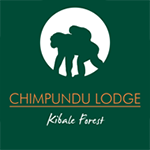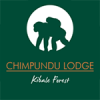A Quick Overview of Kibale NP
Kibale National Park is a national park in western Uganda, that protects the moist evergreen rainforest. It is 766 square kilometres (296 sq mi) in size and ranges between 1,100 metres (3,600 ft) and 1,600 metres (5,200 ft) in elevation. Despite encompassing primarily moist evergreen forest, it contains a diverse array of landscapes. Kibale is one of the last remaining expanses to contain both lowland and montane forests. In eastern Africa, it sustains the last significant expanse of pre-montane forest.
Kibale is one of the best places in Africa to view many primate species. Visitors can expect to see five or six species in addition to chimpanzees.
Species active during the day include vervet, red-tailed, l’Hoest’s and blue monkey, black-and-white colobus, olive baboon, Ugandan red colobus, and Uganda mangabey. Other mammals including lion, elephant and buffalo are present, but rarely seen.
Kibale supports a range of habitats over different altitude zones. The tropical forest on the Fort Portal plateau changes to savannah on the Albertine Valley floor in the south.
The forest has suffered less from logging in the past compared to some other forests in the country and is therefore still relatively pristine and home to some very big mahoganies, figs, and other hardwoods.
Kibale’s proximity to the equator gives it a temperate climate year-round, with a daily maximum of nearly 27°C/81°F. Temperatures are generally higher in the south of the park, where the altitude drops and the vegetation thins out. There’s no real Dry season to speak of, but the park does have two Wet seasons (March to May and August to November).
The drier months of December to February and June to July are best for chimpanzee trekking. However, you can still go looking for the primates in the wetter months (March to May and August to November), which have the added attraction of low-season prices and lower tourist volumes. The East African sky is also less hazy outside the drier periods.
The Location of Kibale National Park is in the western part of Uganda about 348km (5 hrs drive) from Kampala and about 26km south-east of the beautiful Fort Portal town – one of Uganda’s most lovely places to explore. The park is located close to the serene Ndali Kasenda crater area and it takes a half day’s drive to Queen Elizabeth National Park, Rwenzori Mountains & Semuliki National Parks, and the Toro-Semliki Wildlife Reserve.
Southern Kibale borders Queen Elizabeth National Park and collectively these conserved areas protect a 180 km long migration corridor for wildlife that stretches from the remote southern sector of Queen Elizabeth National Park in “Ishasha”, to “Sebitoli” in northern Kibale.

